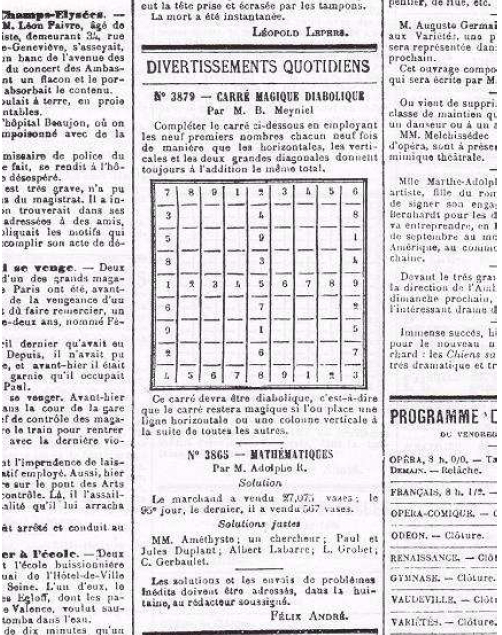
Cryptic crosswords are a fun variation on the basic crossword puzzle concept. The most important difference between a traditional crossword and a cryptic one is in the clues: in a cryptic, every single clue is a lateral thinking puzzle unto itself.
In essence, a cryptic clue leads to its answer as long as you read it in the right way. What the clue appears to say when read normally (the surface reading) is a distraction and usually has nothing to do with the clue answer. The challenge is to find the way of reading the clue that leads to the solution.
A typical clue gives you two ways of getting to the answer, either of which can come first. One part of the clue is a definition, which must exactly match the part of speech and tense of the answer. The other part (the subsidiary indication, or wordplay) gives you an alternative route to the answer. One of the tasks of the solver is to find the boundary between definition and wordplay and insert a mental pause there when reading the clue cryptically.
Either the definition or the wordplay can come first, and they never overlap. As a further hint, the clue is followed by a number in parentheses that indicates the number of letters in the answer.
There are a number of different but reasonably standard techniques employed in the wordplay, including anagrams, charades (breaking down larger words into smaller components), containers (inserting one word within another), reversals (spelling words backwards), homophones (different words that sounds alike), deletions (removing letters from the beginning, middle, or end of a word), double definitions (two different interpretations of the clue give the same answer), and more.
This can sound terribly daunting, but it’s a lot easier than you might think. For example, take the following clue:
Returned beer fit for a king (5)
The phrase fit for a king is the definition and returned beer is the wordplay. Beer is LAGER, returned implies a reversal which gives REGAL, and the definition of REGAL is fit for a king.
Here’s another example:
Power plant lacks a spiritual leader (6)
A power plant is a REACTOR, and a REACTOR that lacks “a” is a RECTOR.
How the heck were you supposed to know all of that? Trial and error, experience, and lucky guesses … that’s what makes cryptic crosswords fun! Here’s a few guides to help you solve cryptic clues:
- National Puzzlers League
- Wikipedia
- The Guardian (newspaper)
Ready to try your hand at an entire puzzle? Although not as common in America, newspapers throughout the British Commonwealth regularly run them. Here are a few online sources for good puzzles that serve them to you absolutely free:
As a final note here, try solving this one:
Obscure shout before headless lens (7)
[spoiler]CRYPTIC. A lens is an OPTIC, headless implies a deletion of the first letter, leaving PTIC, and a shout is a CRY. Okay, so it’s not a great clue … it’s my first attempt at writing one though, so your forgiveness is greatly appreciated.[/spoiler]
 I saw an interesting query in the statistics gizmo used to run this web site. Someone entered the following search string: “how to solve music puzzles”.
I saw an interesting query in the statistics gizmo used to run this web site. Someone entered the following search string: “how to solve music puzzles”.

 Like many geocachers, whenever I travel on vacation or for business, I like to try to find at least one cache wherever I go. And, of course, I like for those caches to be puzzle caches if possible.
Like many geocachers, whenever I travel on vacation or for business, I like to try to find at least one cache wherever I go. And, of course, I like for those caches to be puzzle caches if possible.


